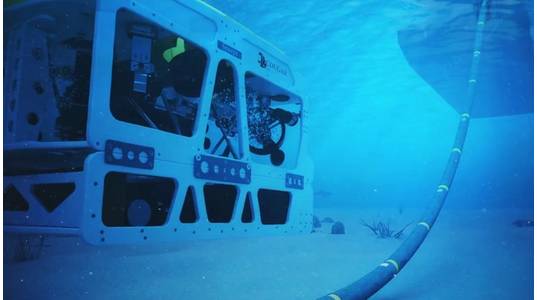
A pipeline inspection solution combining subsea drones and the use of visual markers - barcodes - on the pipelines themselves could drive down the costs of subsea pipeline inspections.
The solutions is being developed by tubular solutions firm Vallourec, smart robotics and visual positioning start-up Forssea Robotic, and subsea positioning and inertial navigation firm iXblue.
According to the companies involved, the solution would remove the need for surface vessels, which are traditionally used in pipeline inspection projects.
Surface vessels with acoustic positioning are traditionally used to monitor the deployment of Autonomous Underwater Vehicles (AUVs) or Remotely Operated Vehicles (ROVs). The subsea vehicles then collect the required information – such as a pipeline’s general aspect and route, anode consumption, free span, burial, and crossing areas – using observation sensors.
"In order to reduce pipeline inspection operational costs, Vallourec, iXblue and FORSSEA decided to develop a solution using visual markers directly integrated on subsea pipelines that enables vessel-free subsea navigation," the companies said.
The project relies on barcodes placed on installed pipes, resulting in many passive positioning references logged with their own coordinates during the laying operation which will remain accessible throughout the life of the field.
These markers would be used as navigation support for subsea drones equipped with Forssea cameras and iXblue’s inertial navigation systems that relay the pipelines’ locations to the operators, thus removing the need for acoustic positioning systems and costly mother vessels.
Per the project participants, the markers are long-term resistant to marine growth and erosion, thus they will remain visible to divers and subsea drones throughout the project’s lifespan,
"This technology had already proven itself on large structures in the field”, said Jean-Guillaume Besse, Vallourec R&D project leader. “Back in January of this year, we did a first sea trial on much smaller surfaces – down to pipes of 6” in diameter – in the South of France. The tests were a success, proving that these markers, combined with iXblue’s and Forssea's expertise, can be used to provide accurate subsea positioning without the need of acoustic systems."



